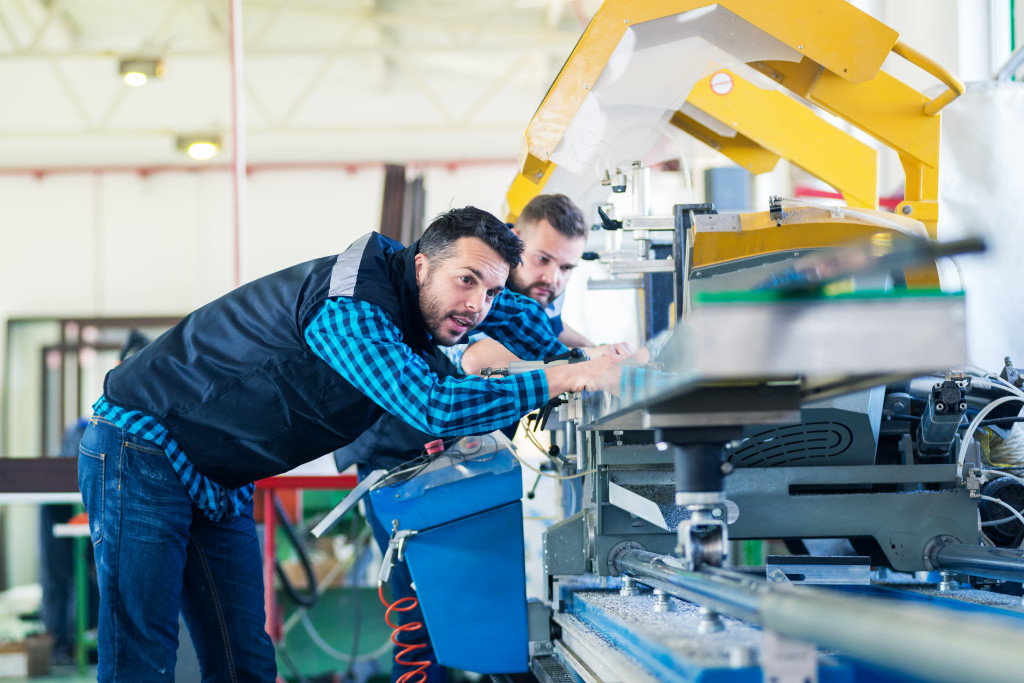Because of the ongoing pandemic and its severe effects on the global economy in 2020, several industries were forced to follow new strategies to continue operations during the crisis, including the manufacturing niche. As a result, the digital transformation of businesses and employee safety will be more crucial than ever.
With that said, here are the top seven trends in manufacturing that will dominate 2021, ensuring better operations and long-term success.
Prioritization of Employee Safety
With the events of 2020, employee safety has never been more crucial, and it has become one of the biggest trends in the manufacturing industry in 2021. Even with big innovations, new technology, and advancements, it’s still important to stick to the basic or core principles that work.
Health and safety should come first — workers should observe safety protocols and wear proper gear; premises should be kept clean at all times, and equipment and machines should always be well-maintained. Big equipment, especially hydraulic machinery, should be checked up and repaired regularly.
IoT Still Reigns
Because of the digital age, the Internet of Things (IoT) trend is becoming more standard, widespread technology in manufacturing, letting it remain on the list of the top trends for several years thanks to its adaptability and innovation — and 2021 is no exception. This trend entails the interconnection of different gadgets within an internet infrastructure, allowing manufacturers to make better-informed decisions using real-time data, achieving various goals, including cost reduction, improved efficiency, safety, and product innovation.
IoT offers exciting and new opportunities to different manufacturers, allowing them to connect operations and make overall business processes seamless.
3D Printing Takes Manufacturing to the Next Level

Manufacturers can now produce more accurate and efficient components quicker with fewer resources through 3D printing or additive technology, improving overall performance. By adding materials layer by layer using digital data based on a 3D model, manufacturing companies can now print whatever they need, ranging from miniature jet engines to home appliances.
This trend saves many manufacturers time, and money as location can be an issue to many, leading to many casting parts and having it manufactured outside their headquarters’ countries — leading to longer lead times, more money wasted, and poor quality control.
Going Green in Manufacturing
The manufacturing industry has always been a demanding sector, and today, it represents 54% of the planet’s energy consumption and 20% of global emissions, which is terrible for the environment. That’s why many sought that this sector, alongside its many companies, go green. Manufacturers in recent years have done this by repurposing materials and resources, changing to renewable energy to power operations, and reducing waste by tracking every step in the manufacturing process.
Pilot Plants Eliminate Risk from Large-Scale Manufacturing
A pilot plant helps demonstrate the feasibility of potential process technologies for real-world operations, assisting manufacturers in removing the risk from different projects. De-risking has been the driving force and sole purpose of a pilot plant, and in today’s environment of shorter product lifespans, the drive has never been stronger.
In essence, pilot plants show how manufacturers can make process technologies at a more modest industrial scale before the full-scale project commences, making processes smoother.
Frontline Employee Tech Remains A Must-Have
In the new decade, manufacturing companies will digitally enable their front liners for various reasons, including that manufacturers need to establish digitally connected networks between workers and the latest Industry 4.0 technologies. That’s because in modern factories, employees must communicate digitally with one another and the machines they’re in charge of and are managing.
Another reason is that employee technology has become a critical tool in the digital transition process, and with the progress not slowing down. It’ll only accelerate, shifting away from conventional communication methods and enabling workers with mobile-friendly tools.
Big Data and Data Analysis Improves Manufacturing
Different manufacturers are constantly looking for ways to gather, analyze, and use data to solve issues before they occur and make necessary adjustments or upgrades in uptime and quality. Advanced big data can help address challenges in quality and productivity in manufacturing. It wasn’t long ago when manufacturers had little means of communicating with their team members and customers as data back then was hard to gather and often shared through physical spreadsheets and word of mouth.
All these make the possibility of predicting problems impossible. Nowadays, with most manufacturers taking the digital route, they let machines do the talking, resulting in massive amounts of raw data gathered through different kinds of intelligence. With big data and advanced data analysis methods available, manufacturers can dissect the data, identify the right ones, and use the findings meaningfully, creating actionable results.
The “new normal” for manufacturing industries in the new decade will revolve around how efficiently they can continue operations amid the ongoing pandemic and recovering economy. The trends mentioned are some of the biggest game-changers in manufacturing, ensuring smooth operations and immense success throughout 2021 and beyond.





